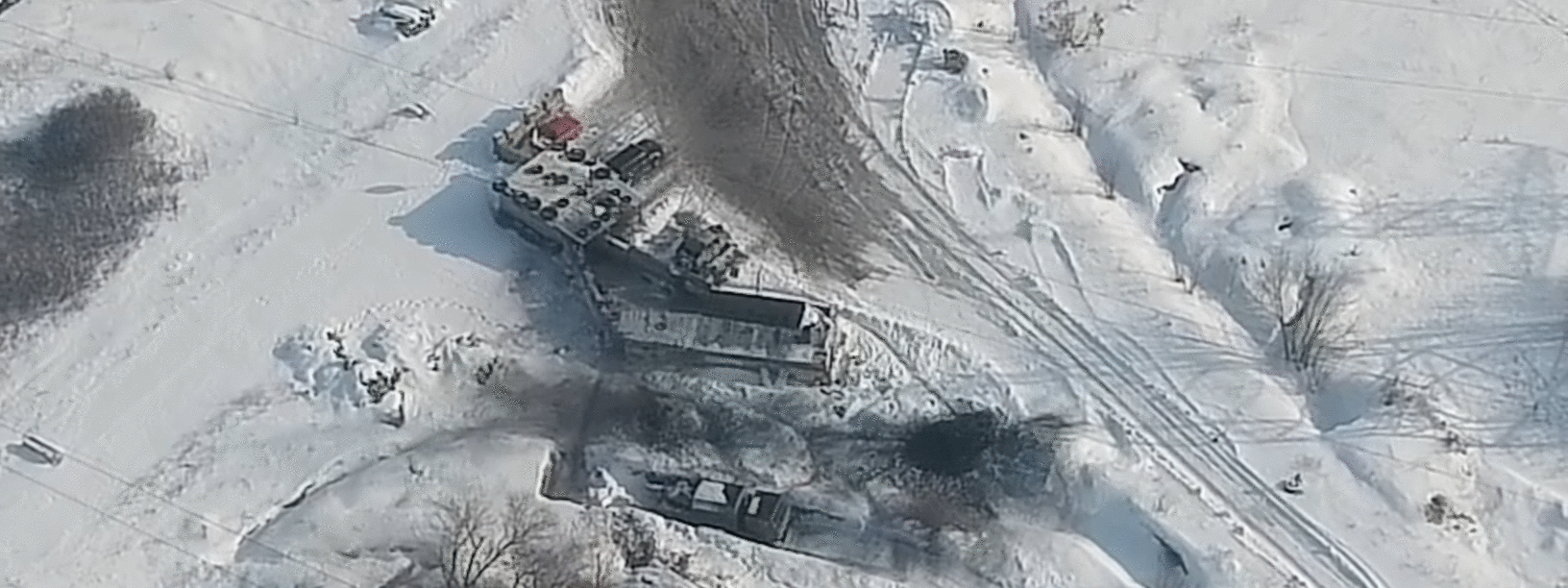#MinskMonitor: Disregard for Disengagement in the Donbas
Sporadic shelling continues in Ukraine’s east in the Zolote disengagement area
#MinskMonitor: Disregard for Disengagement in the Donbas

Sporadic shelling continues in Ukraine’s east in the Zolote disengagement area

[facebook url=”https://www.facebook.com/ukrop.bc/videos/vb.100011397314036/” /]

[facebook url=”https://www.facebook.com/ukrop.bc/videos/vb.100011397314036/” /]

Overlay of footage of the shelling with Google maps imagery. (Source: Google Maps; Анатолий Штефан Штирлиц)
On February 4, another frequent uploader of drone videos, Yuriy Misyagin, posted higher resolution footage of the same incident, clearly detailing what took place. The video was titled “operation ‘payment,’ with a vengance,” likely in reference to an earlier incident in which a Ukrainian service member was killed by an anti-tank guided missile (ATGM) reportedly launched from this position.
The video showed a structure heavily resembling a bunker or checkpoint, with personnel visible in the footage. After a lull in the shelling, the personnel manning the checkpoint fled to a nearby bunker. There was no evidence of casualties at the checkpoint from this video.
Next to the structure, in a protective trench, a military truck was visible and appeared to take a near-direct hit toward the rear of the vehicle. The vehicle appeared to be a Kamaz truck with a ZU-23–2 anti-aircraft gun to its rear. This is a common setup in “LNR” armed formation with Ural trucks, but less so with Kamaz trucks. This truck armed with an anti-aircraft gun would have been in violation of the disengagement agreements.

Given the details of the video including snow cover, it was clear that the northward facing road was untouched by tire tracks, while roads in all other roads had seen at least some use. This is the road that connects to the government-controlled checkpoint. The pristine nature of the connecting road meant that civilian traffic in that area was likely nonexistent, and that the shelling was at minimal risk to civilians. By the end of the attack, the anti-air truck had left its protective trench, and the checkpoint was left with minimal structural damage.
Two weeks later, on February 14, Misyagin uploaded a video aptly named “Operation ‘Payback’ part two.” The video took place just over five hundred meters from where the original video was recorded. Again, a Kamaz with a ZU-23–2 anti-aircraft gun on its bed was the target of what appeared to be shelling from several different calibers.
It was not clear from this video whether the same truck from earlier was relocated to this position and then re-engaged, or if it was a different one. Nonetheless, the truck appeared to take damage to its cab during this round of shelling.

Conclusion
From the available footage, the continued utility of commercial quadcopter drones in conducting ranged attacks is apparent. Throughout the conflict, quadcopter drones have been utilized for their ability to maintain a stable hover for guiding artillery fires and dropping payloads on enemy positions. These incidents in specific also showed the limits posed by unguided munitions and consumer hardware in war as many rounds were expended, but the damage to target remained unclear. Days before this incident Ukrainian forces lost a serviceman in this area after a vehicle took an anti-tank missile hit, wounding an additional four. It is possible that this shelling was in retaliation to that incident.
These recent incidents, in part through publicly available drone footage, highlighted the nature of this protracted conflict. While fighting overall is in decline, mechanisms set in place to reduce fighting are routinely ignored, leading to a conflict characterized by intermittent skirmishes and casualties in service of no apparent territorial gain.
Follow the latest Minsk II Violations via the @DFRLab’s #MinskMonitor.
For more in-depth analysis from our regional experts follow the AtlanticCouncil’s Dinu Patriciu Eurasia Center. Or subscribe to UkraineAlert.
Follow along for more in-depth analysis from our #DigitalSherlocks.

